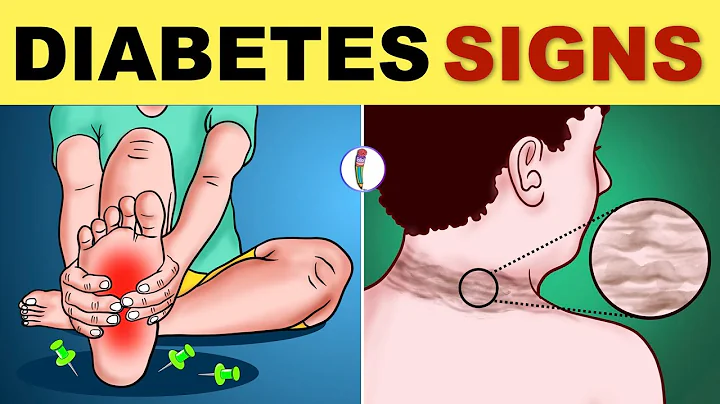Recently, there was a piece of news that shocked the editor:

After seeing this news, the post-95 intern sitting next to the editor silently put down the fat house happy water he just bought.
In many people’s perception, the group with the highest incidence of diabetes is the elderly. In fact, this is not the case. Diabetes can occur at any age, and in recent years, it has become more and more "younger". A simple diet, a lifestyle of "can't hold your tongue, can't move your legs", staying up late every day, often being in a state of high mental stress, and being unable to resolve bad emotions in time are all the reasons why people with diabetes are getting younger.

There are many patients and they tend to be younger, but medical resources are scarce
According to the 8th edition of the Global Diabetes Map released by the International Diabetes Federation (IDF) in 2018, the latest report shows that in 2017, there were approximately 425 million adults (20-79 years old) worldwide. ) suffer from diabetes, on average there is 1 diabetic patient for every 11 people. Among them, the number of patients in China is as high as 114 million, and the number of children and adolescents with type 1 diabetes (<20>

Image source: 2018 International Diabetes Federation (IDF) 8th Edition Global Diabetes Map Report
Top Ten Countries with Type 1 Diabetes Prevalence in Children and Adolescents (<20>
In fact, diabetes itself is not terrible, The scary thing is that it can induce a variety of complications, and diabetic eye disease is the most common complication. For example, the cataract mentioned above. Cataracts can be treated with cataract extraction when blood sugar is controlled. If there is no proliferative diabetic retinopathy , a posterior chamber type intraocular lens can be implanted to restore a certain degree of vision.
But if it is diabetic retinopathy, once it occurs, the blinding process of the patient is often irreversible. The prevalence of this complication in people with diabetes ranges from 21% to 36%. According to the previous data, it is estimated that the number of sick people is about 40 million. Compared with non- proliferative retinopathy , this kind of proliferative retinopathy is more harmful to vision. The incidence rate increases with the increase of the disease time, which can lead to severe vision loss or even complete blindness. This is also the case for adults. A major cause of acquired blindness.
Looking at ophthalmology, doctor resources are very scarce. According to relevant data, there were less than 40,000 ophthalmologists in the country in 2017. The previous article only gives examples of patients with diabetic retinopathy, and does not include patients with other eye diseases. There is a serious asymmetry in this process.

When AI meets ophthalmology, the accuracy of auxiliary diagnosis and treatment is high
In this case, the value of artificial intelligence is highlighted. The machine conducts deep learning through fundus imaging data, forming image judgment and recognition capabilities similar to those of ophthalmologists, and assists doctors in diagnosing eye diseases.
In order to ensure the accuracy of the final results, this requires huge clinical data as the basis for calculations, and the advantages of eye specialist hospitals in this regard are very obvious. For example, Aier Eye Hospital Group and Jinhong Technology Co., Ltd. (MiiS) jointly developed an artificial intelligence eye recognition solution.

Image source: Jinhong Technology official website
AIER and MiiS utilize thousands of privacy-protected images from AIER data files, via the MiiSHorus* digital handheld fundus camera (a portable device used to capture high-resolution images of the interior of the eye). device. The flexible Horus camera can be used in a variety of settings, such as community clinics, ambulances and hospital wards) to incorporate deep learning capabilities and be trained on large volumes of images to identify and differentiate between diabetic retinopathy and age-related macular degeneration. key indicators.
But the huge data cannot be supported by ordinary processor . Intel provides a solution for it by using Intel® Xeon ® processor on the back end of the instrument to optimize the Intel® architecture. Caffe*, an open source deep learning framework developed by the Berkeley Vision Learning Center (BVLC). Caffe, optimized for Intel® architecture, is now an official fork of BVLC.), Intel® Math Kernel Library for Deep Neural Networks, and multiple optimized open source math and imaging libraries to test its performance.

Although entry-level products using Intel® Xeon® Scalable processors, MiiS and AI have also achieved significant speed improvements. The results show that the speed is more than 100 times faster than standard Caffe on the previous generation Intel® Xeon® processor. Optimized Caffe on Intel® Xeon® Bronze processors also increases the speed of performing the inference required to differentiate between patient conditions by more than 7.4x.

Previously, manual screening for diabetic retinopathy and age-related macular degeneration could only achieve an average accuracy of 70% and 80%, and in an analysis of imaging data from 5,000 AIER patients, according to MiiS and AIER reports , the accuracy of detection using deep learning solutions soared to 93%. Tang Shibo, President of
Aier, said: “It is not uncommon for high-quality deep learning solutions to exceed manual diagnosis by expert doctors in overall accuracy, because computers do not suffer from fatigue, eye fatigue, lack of concentration, etc. Improved accuracy is one of the reasons we are pioneering medical image analysis because it helps us treat patients faster and get the most out of our medical staff.”
Get out into the community and do it without an ophthalmologist. Check
This kind of handheld fundus ophthalmoscope integrated with deep learning function will have a broader application scenario, allowing some community hospitals at the grassroots level to conduct fundus screening on patients even if they do not have an ophthalmologist, and then transmit the screening results to The solution's reasoning system performs rapid analysis, categorizes and labels problem areas, and makes recommendations on whether to refer the patient to an eye specialist.

Image source: Jinhong Technology official website
According to doctors’ recommendations, diabetic patients need to undergo fundus screening every three months or six months. This affordable and high-quality eye health screening solution can not only solve the problem of the shortage of ophthalmologists, but also make it more convenient for patients. They do not have to travel to the hospital for a check-up. Instead, they can check the fundus at a community hospital or medical point near their home. Through regular testing, patients are provided with opportunities for early diagnosis and treatment, helping more patients to protect their vision.
Adjust your lifestyle and check your blood sugar regularly
If young friends suffer from diabetes and develop diabetic eye disease, there is no need to feel that the end of the world has come. As long as they follow the doctor's instructions, take medicine to control blood sugar, adjust their diet, and keep their mouths shut. , open your legs; check your blood sugar and fundus regularly, and treat the lesions as soon as possible to avoid worsening of the condition.

In addition, everyone with poor living habits also needs to be vigilant at all times. If you have three more and one less symptoms for a sustained period of time (i.e. polyuria, polydipsia, polyphagia and weight loss), or even inexplicable vision loss, the wound will be difficult to treat. Healing and other symptoms. It is recommended to go to the hospital to check your blood sugar. Once the diagnosis is confirmed, check the fundus first to understand whether the vision is damaged and the extent of the damage, and to treat it in time.
This is also a wake-up call for today's young people to quickly get rid of bad habits and avoid obesity; maintain an ideal and appropriate weight, keep a happy mood, and let yourself have the vitality appropriate for your age, and the chance of disease will come to your door will be greatly increased. reduce. Okay, let's not talk about it. It's almost time to get off work. The editor who is in a happy mood is going to the gym to strengthen his body. That's it for today. See you later.





















